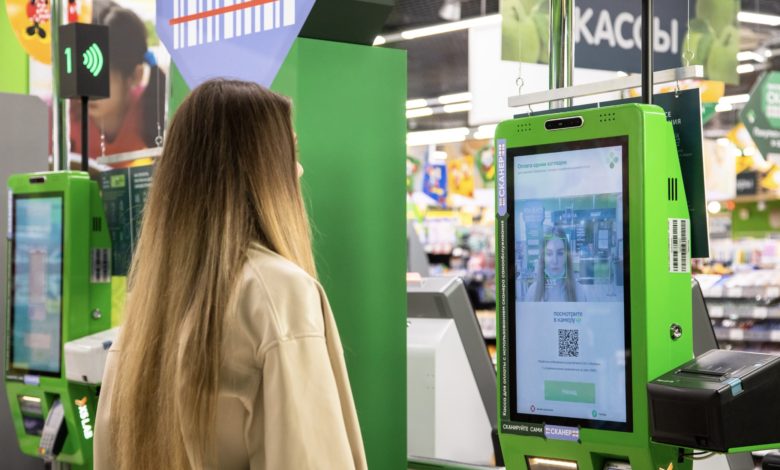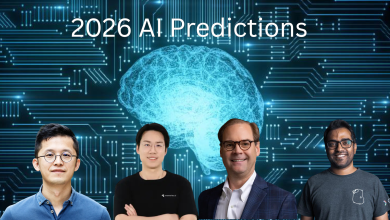
When considering how artificial intelligence (AI) can benefit retailers, the discussion frequently focuses on e-commerce, but physical stores – especially food retail – offer excellent opportunities for AI. The technology not only supports grocery store efforts to improve the guest experience, but AI shares the wealth in terms of efficiency, as corporate gains from AI tend to benefit the customers as well.
According to a 2019 IBM Institute for Business Value study, by the end of 2018, 28% of retailers had implemented AI or machine learning (ML), surging 600% in just two years. There are four notable trends around AI use in food retail: demand forecasting, assortment management, automated pricing and video.
Demand Forecasting
AI is a key component progressing “the promise of the Fourth Industrial Revolution,” according to Harvard Business Review, as the technology transforms not only how people shop but how retailers decide what and how much to put on the shelves. Companies already hold years of transaction data that they can integrate with external information, ranging from weather to macroeconomic factors, to improve the accuracy of demand forecasting.
In 2018, American pharmacy chain Walgreens announced it was using data from the number of anti-viral prescriptions it fills at more than 8,000 locations to track the spread of the flu. The online, interactive map not provides regional information for customers as to how many of their neighbours have the flu, but also the company stock more inventory of flu-related products in locations with a high rate of infection.
For food retailers, AI-based demand forecasting can also reduce losses, for instance, minimising the volume of perishable goods left unpurchased before their expiration date – which has the added bonus of helping reduce global food wastage.
Assortment Management
Offering a different range of products in different locations is common practice, but by using AI to analyse and automate the assortment in stores, retailers improve their ability to offer customers what they want, where they want it, while also reducing human error in deciding what to stock on shelves.
Automated assortment management is an ongoing process that monitors store performance based on a range of factors and helps retailers to tailor different types of stores to different customer needs.
For instance, supermarkets located in business districts surrounded primarily by office buildings will offer a higher share of ready-to-eat goods to serve office workers looking for a meal on the go, while those in residential areas will focus more on traditional groceries and ready-to-cook offerings for people to take home.
Automated Pricing
Retail is highly competitive, margins are generally very thin and so pricing is paramount. E-commerce companies like Amazon already use AI for price optimisation, not only to maximise profits but to increase stability during any unexpected market dynamics.
Of course, these goals are important in food retail, as well, and the ability to react quickly and correctly to changes provides a competitive edge. Supported by big data, supermarkets can use AI to constantly input and analyse competitor prices across key goods and geographies, and quickly make decisions that factor in internal priorities, such as margin and traffic.
Video
AI-driven video systems are powerful monitoring tools for food retailers. These innovations keep an eye on queue lengths, how well-stocked shelves are, and the status of fruits and vegetables. Video monitoring not only ensures produces are fresh and plentiful, but AI-driven systems can pick up on when apples have gotten mixed with oranges and inform store management that personnel needs to be assigned to restocking and/or cleaning up the assortment.
Video technology can also be used for monitoring queues. A survey of 1,000 U.S. customers revealed that 86 percent have left a store rather than wait in long lines, resulting in approximately $37.7 billion lost in potential sales. By monitoring queues, AI systems not only cut down on customer waiting time, ensure tills aren’t overstaffed and protect potential sales, but the technology can also contribute to community safety.
During the COVID-19 pandemic, Russian retailer X5 connected the data from its queue monitoring cameras to Yandex, which is Russia’s largest search provider, letting customers view on a map how busy their local stores were in order to help avoid overcrowding at any given store.
The global market for AI in retail was USD 3.01 billion in 2019 and is projected to grow to USD 23.32 billion by 2027. Although AI is already widely used in retail, there remains huge potential for growth. It seems logical to conclude that for food retail, the most effective applications may also be the ones most invisible to customers, such as demand forecasting, assortment management, automated pricing, and AI-driven video monitoring systems, because of the seamless way they improve the customer experience. However, the reality is a bit more nuanced.
At X5, we’ve both developed AI-driven solutions in-house, as well as implemented AI systems developed by third parties, and we are continuing to explore the exciting opportunities AI delivers. Through this process, our continued success is the direct result of our commitment to keep the customer at the centre of every decision and development. As AI solutions develop in various exciting ways, the customer must remain at the centre of every decision, even if that decision is ultimately made by an algorithm.




